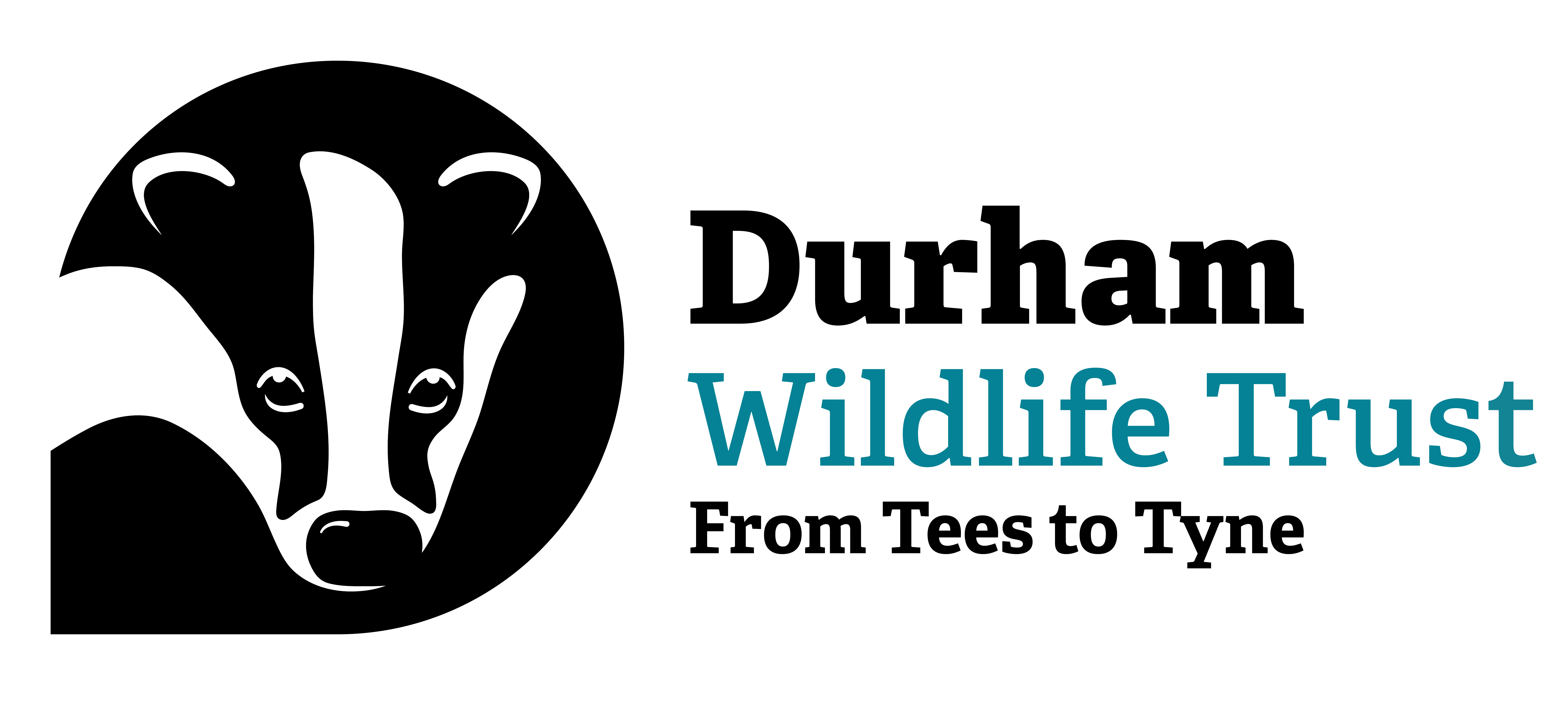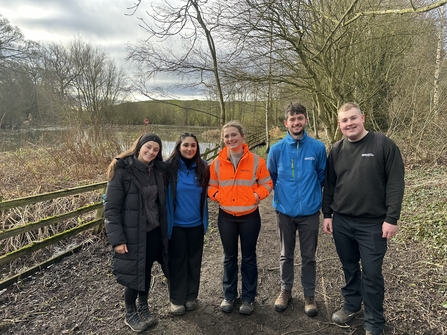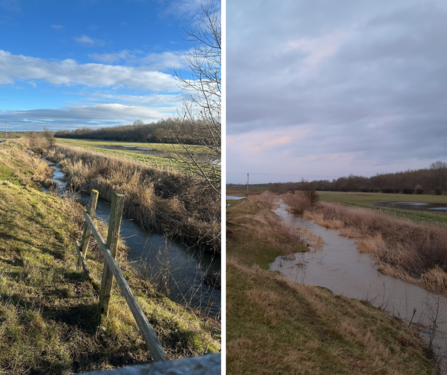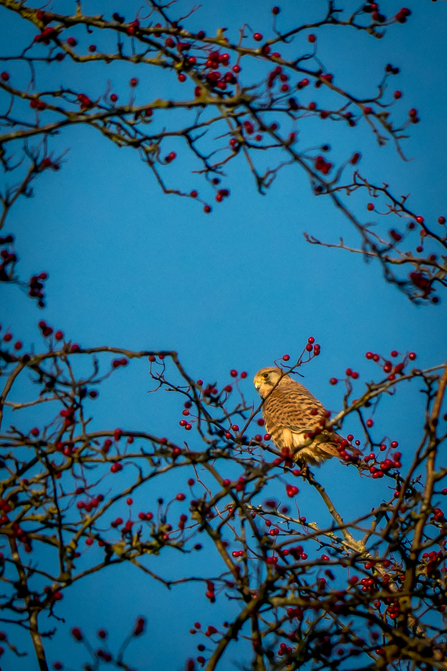Durham Wildlife Trust and Northumbrian Water laced up their boots in January to explore the River Skerne catchment. We walked from Bishop Middleham village to visit to one of Durham Wildlife Trust’s Great North Fen wetland restoration sites; Bishops Fen.
Our wildlife and water experts were accompanied by Ryan, Lawizah, Marnie, Isabella, and Mary who are taking part in a two-year graduate scheme with Northumbrian Water gaining experience and skills across a variety of roles in the water industry.





